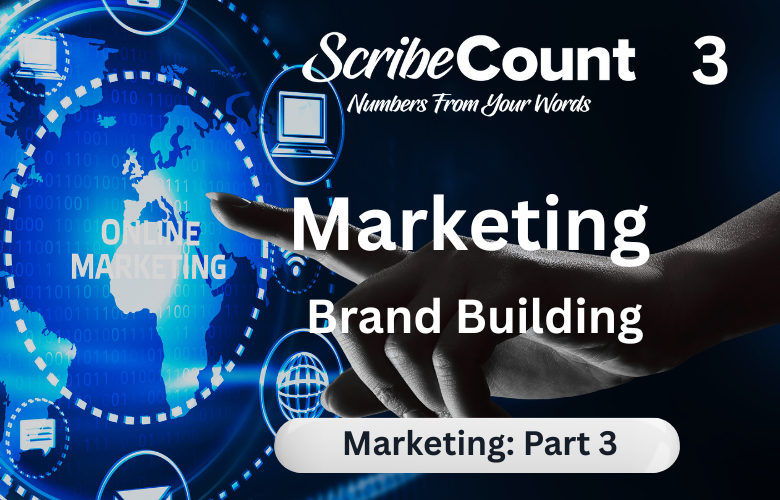Brand Building for Indie Authors: How to Create a Lasting Author Identity
In the world of indie publishing, success doesn’t come solely from writing good books. It comes from building a brand that readers recognize, trust, and return to. The independent author has become more than a storyteller—they are also an entrepreneur, a marketer, a public face, and a creative director. Among all these roles, brand builder may be the most important long-term.
A strong brand helps indie authors rise above the noise in a crowded market. It turns casual browsers into loyal readers, transforms fans into evangelists, and makes every book launch easier than the one before. Without a defined brand, even the best writing can go unnoticed. But with a clear identity and consistent message, even a modest backlist can become the foundation of a powerful career.
This article explores how to build a brand as an indie author, starting with foundational principles and evolving into strategy, visibility, design, values, consistency, and engagement. From visual identity to emotional resonance, we’ll walk through how authors can build an authentic brand that resonates with readers and grows stronger with every release.
Understanding What an Author Brand Truly Is
A brand is not just a logo. It’s not a palette of colors or a catchy tagline. A true brand is a promise. It’s the emotional, psychological, and practical expectation readers associate with your name every time they see one of your books. It’s a memory they carry about how your stories made them feel. It’s the reason they click on your name in a crowded online bookstore or remember to open your email among hundreds in their inbox.
Your brand is built from the sum of every touchpoint a reader has with you—from your book covers and website to your tone on social media and how you sign off in your emails. Every element must speak the same language, reinforce the same story, and reflect the experience your readers will find inside your pages. A brand is not created in a day. It’s cultivated over time through consistency, clarity, and connection.
Start With Core Identity: Know Who You Are and What You Offer
The most powerful brands begin with clarity. Before you can build a brand that speaks to others, you need to understand who you are as an author. What themes do your books explore? What genres do you write in—and why? Who are your readers, and what do they expect when they pick up one of your titles?
Are you a suspense author who delivers fast-paced thrillers with smart heroines? A fantasy writer known for immersive worldbuilding and slow-burn romance? A sci-fi writer who blends adventure with political allegory? Every author offers something unique. The more specifically you can define what that is, the more effectively you can brand around it.
Clarity leads to focus. Focus creates memorability. When readers know what to expect from you, they’re more likely to stick around for the next book—and the next. Your brand starts by claiming your space in the market, then reinforcing that claim through every book and interaction.
Visual Branding: Covers, Colors, Fonts, and Identity
Visual design plays a significant role in brand recognition. While your brand is much more than your visuals, consistent design across your author ecosystem helps readers recognize you at a glance. Your book covers should not only match genre expectations but also align with each other in tone, composition, and feel. When a reader sees one of your books, they should instantly associate it with the others.
That consistency extends to your website, your social media headers, your email template, and even your press kits. Use the same font families, color schemes, and layout choices across all channels. Tools like Canva, Adobe Express, and DesignCuts can help non-designers create and maintain cohesive branding elements. Authors who work with cover designers should discuss long-term branding goals early, so future titles continue to support the evolving visual identity.
For your website, consider platforms like Squarespace, WordPress, or Weebly with branding-friendly themes. If you sell direct through Shopify or WooCommerce, be sure to use store themes that complement your branding rather than compete with it. A visually cohesive environment builds trust and makes readers feel at home in your world.
Voice, Tone, and Personality: Your Brand in Words
While visuals attract, voice creates connection. The way you communicate—through newsletters, social media, author notes, or even metadata—forms the emotional heart of your brand. Your tone might be witty, professional, intimate, or inspirational. What matters is that it's true to your personality and consistent across platforms.
If your books are dark and gritty, your brand voice likely leans serious, intense, and perhaps a bit provocative. If your books are light-hearted romantic comedies, your tone might be warm, playful, and cheeky. Match your brand voice to the emotional promise of your fiction.
Email platforms like MailerLite, ConvertKit, and Klaviyo allow you to maintain a consistent voice through newsletters and automation flows. Use email as a core place to develop reader connection—share stories, updates, and insights that match your brand voice. Social scheduling tools like Later or Metricool help you maintain consistency on social channels where your tone continues that relationship.
Core Values and Emotional Resonance
Your brand should reflect your values, whether spoken or implied. Do you champion strong women? Celebrate diversity? Focus on uplifting endings? Challenge political systems through speculative fiction? Readers are drawn not only to what authors write but why they write it.
You don’t have to broadcast your personal beliefs, but your stories and your brand should share a coherent emotional through-line. The reader who buys your third book should feel the same emotional energy they felt in your first. That’s how trust is built. Emotional resonance creates reader loyalty, and loyalty is the foundation of long-term author success.
Define what emotional experience you want your brand to evoke. Should readers feel empowered, unsettled, inspired, entertained, comforted, or provoked? Build every brand decision around creating that feeling.
Building Your Brand Ecosystem: Website, Store, and Media Channels
A brand lives across a network of spaces—your website, storefront, newsletter, and public-facing profiles. These elements form your brand ecosystem. Your official author website should act as your hub. It’s the destination you own, where your brand is fully under your control. Readers should land on your homepage and immediately understand what you offer and why it matters to them.
If you sell books directly, your store—built through Payhip, Shopify, WooCommerce, or Lemon Squeezy—should reflect the same branding principles. Use matching fonts, colors, and voice. Product pages, landing pages, and checkout flows should feel like a seamless extension of your brand.
Every social media platform you use should reinforce your brand identity. Don’t treat them as throwaway marketing tools. They’re part of your reader experience. Even short videos on TikTok or posts on Threads can reinforce the promise your brand makes.
Series Branding and Book Cohesion
If you write in series—a strategy favored by most successful indie authors—your branding must also work at the series level. Series branding helps readers recognize which books go together and in what order to read them. Your series name, cover templates, interior formatting, and book descriptions should all align.
Use consistent title structures. If your first book is “The Edge of Silence,” avoid naming the sequel “Burning Sky” without any link. Design your series pages, boxed sets, and promo materials to showcase the continuity. A reader who finishes one book should instantly know what to read next—and trust that the experience will deliver on the same brand promises.
Brand Expansion and Genre Growth
Over time, you may grow beyond your original genre or experiment with a new pen name. This is where strategic brand architecture comes into play. If your core brand is known for cozy mystery but you want to write psychological thrillers, consider whether your current name can stretch—or whether it’s better to segment.
Multiple brands require multiple identities, which can dilute your efforts if not managed carefully. Many authors use umbrella branding to manage growth—linking multiple genres under a single name but clearly signaling genre shifts through design and marketing. Others choose to create secondary brands with their own websites, newsletters, and sales strategies.
Platforms like BookFunnel and StoryOrigin allow authors to manage multiple pen names while promoting each brand to its ideal audience.
Community and Reader Relationships
No brand thrives in isolation. Your brand is strengthened every time a reader shares your book, recommends it to a friend, or posts a review. Your job is to create a space where those actions feel natural. Build reader relationships not only through your fiction, but through community. Offer behind-the-scenes insights, respond to comments, run Q&A sessions, and celebrate fan art or reader stories.
Use private Facebook groups, Discord communities, or reader circles to invite connection. Share your process, your failures, your wins. Readers want to support authors they feel they know. Your brand becomes stronger the more readers feel included in the journey. Connection deepens brand loyalty—and loyal readers become your best marketers.
Consistency Is the Currency of Branding
A great brand is not built overnight. It emerges over time through consistency. That means writing within your genre long enough to develop a body of work. It means showing up for your readers with regular communication. It means using the same voice, tone, colors, and style across all touchpoints. It means maintaining visual and thematic cohesion between books, and keeping your online presence up to date.
Even your decisions around pricing, launch schedules, bonus content, and merchandise should reflect the same internal logic. Randomness erodes trust. Consistency builds it. Readers reward authors who keep their promises. Inconsistency sends mixed signals—and readers don’t stick around when they don’t know what to expect.
Evolving Your Brand Over Time
A good brand is not static. As your career evolves, so should your brand. Maybe you begin with young adult fantasy and shift into adult paranormal romance. Maybe you find that readers respond more strongly to your newsletters than social posts. Maybe you update your cover design to reflect changing genre norms.
Evolution is a sign of maturity. What matters is that change happens strategically, not randomly. As you grow, review your brand periodically. Audit your site, covers, bios, and store to ensure alignment. Get feedback from beta readers, superfans, or brand designers who understand the indie space.
You can evolve without abandoning your foundation. Rebranding isn’t about erasing the past—it’s about refining your future. When done right, a rebrand can breathe new life into your career and attract a new tier of readers who align with your current creative identity.
Final Thoughts: Branding Is Career Insurance
Your brand is your legacy. It’s the story readers tell about you when you’re not in the room. In a market where millions of new books appear every year, branding is how indie authors survive, scale, and thrive. A strong brand means your audience grows faster. Launches become smoother. Your store converts better. Readers trust you more—and that trust is what keeps your career sustainable.
The best brands aren’t built by accident. They’re intentional. They’re authentic. They reflect the values, stories, and experiences the author wants to share with the world. You already have the beginnings of your brand within you. All that’s left is to shape it, nurture it, and share it consistently.
With time, clarity, and strategy, your brand will become more than a logo or color scheme—it will become a beacon, drawing readers in and keeping them close.

